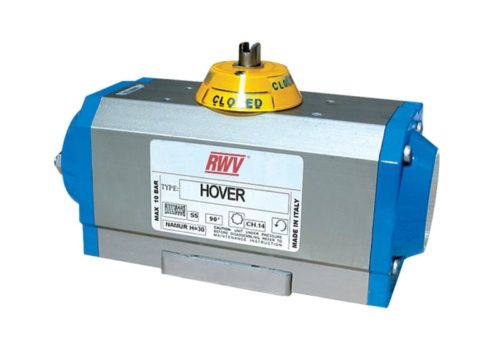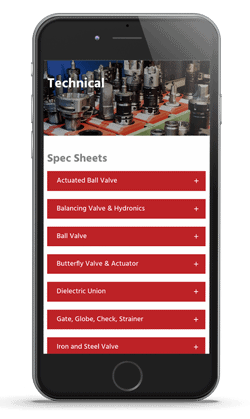What Is a Pneumatic Actuator?
Actuators convert potential energy into kinetic energy (i.e., mechanical motion) when prompted by a control signal. They are integrated into a variety of devices and systems to perform various tasks. There are many types available, each of which is suitable for different applications. One way of categorizing them is by their power source (i.e., what form of energy they use to produce mechanical motion).
Pneumatic actuators—also referred to as pneumatic cylinders, air cylinders, and air actuators—rely on compressed air for their operation. While all pneumatic actuators have the same basic components (a cylinder, ports or valves, and a mechanical element), they can vary in design; for example, rotary actuators convert energy into rotary motion, while linear actuators convert energy into linear motion.
Typical applications for pneumatic actuators include:
- Aircraft
- Automobiles
- Packaging and production equipment
- Pump systems
- Trains
How Does a Pneumatic Actuator Work?
As mentioned above, a pneumatic actuator uses compressed air to produce mechanical motion. It does this by containing regular air, pressurized gas, or a combination of the two within a chamber and allowing it to expand. As the air/gas expands, it creates a pressure differential between the inside of the chamber and the surrounding environment, which energizes the air/gas. The air/gas is then directed out of the chamber toward a mechanical component (e.g., gear or piston), which actually performs the task.
Advantages of Pneumatic Actuators
Compared to other types of actuators, pneumatic valves offer a number of advantages.
- They have a simple design, which makes them easy and, consequently, cheaper to produce.
- They are highly durable and easy to maintain, resulting in lower replacement and repair costs.
- They do not require electricity or ignition to operate, making them suitable for use in environments where combustion is a concern.
- They can generate greater forces than electric actuators, which makes them better suited for handling heavier loads.
Types of Pneumatic Actuators
Pneumatic actuators can be classified according to a variety of design factors. For example, they can be categorized into three main varieties based on what type of mechanical motion they produce: linear, rotary, and combination.
Linear Actuators
Linear actuators are designed to produce linear motion. They use various mechanisms to perform this function, such as pistons and diaphragms. In piston-style linear actuators, the stroke length is dependent on the length of the cylinder. In diaphragm-style linear actuators, the stroke length is dependent on the stretch tolerance of the diaphragm.
Piston-style linear actuators can be further classified into single-acting actuators and double-acting actuators. Single-acting actuators rely on air pressure to move the piston in one direction and a spring to move it back to the original location. Double-acting actuators rely on air pressure to move the piston forward and back. The former has a simpler design, a smaller footprint, and lower compressed air requirements. The latter offers greater force capacities, faster operating speeds, and longer lifespans.
Rotary Actuators
Rotary actuators are designed to produce rotary motion. Similar to linear actuators, they use a variety of mechanisms to perform this function. Some of the most commonly used are pistons, diaphragms, yokes, vanes. Piston-style rotary actuators offer a limited range of rotation, yoke-style rotary actuators offer up to 90 degrees of rotation, and vane-style rotary actuators offer up to and exceeding 360 degrees of rotation.
Combination Actuators
Combination actuators are designed to produce both linear motion and a limited degree of rotary motion. They are commonly used in work holding applications, where they are used for clamps that must be constantly engaged, disengaged, and reengaged to switch out workpieces.
Pneumatic Actuators From RED-WHITE VALVE CORP.
Pneumatic actuators play a vital role in many different devices and systems (e.g., in valve systems, they open and close the valve to start and stop the flow of fluid). Given their importance, it is essential to source them from a reliable supplier. Otherwise, they may underperform or fail, which can lead to loss of productivity and profitability.
Need pneumatic actuators you can trust in your critical valve applications? The experts at RED-WHITE VALVE CORP. have got you covered! We offer high-quality pneumatic actuators for valve assemblies used in industrial and commercial applications. To learn more about our product offerings, contact us today.

